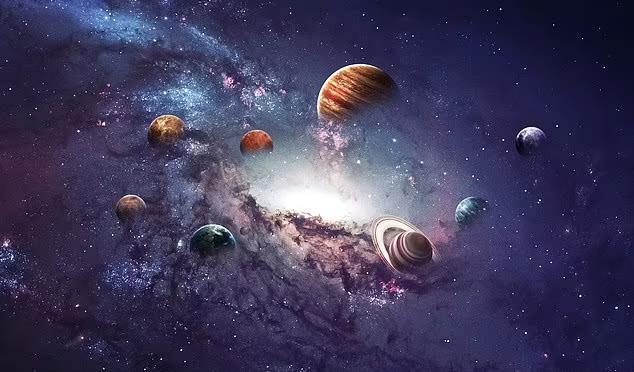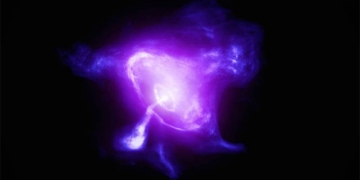French scientists have recreated the early days of the Solar System through a special model and discovered that our entire world, including Earth, formed from one of the most catastrophic events in the universe: supernovae.
The research was conducted by a team of scientists led by the École Polytechnique in France, in collaboration with the Free University of Berlin (Germany), the University of Oxford (UK), the Russian Academy of Sciences, and Osaka University (Japan).
They recreated in the laboratory a model of a part of the molecular cloud that gave birth to the Solar System.

The Sun and planets including Earth formed from the deadly supernova explosion – (Photo: DAILY MAIL)
According to Science Daily, such molecular clouds in the universe contain the building blocks of stars and planets; however, they would remain in a state of equilibrium and “peace” forever if nothing were to happen.
The researchers used a special foam ball that mimicked a dense region within the molecular cloud. A high-powered laser sent a shockwave through a gas chamber and into the foam ball. The entire process was observed using X-ray imaging.
The results showed that the explosion caused by the laser, embodying the characteristics of what is called a “supernova,” caused gas and dust to clump together and begin to rotate at a site with the “seed” of a star, gradually transforming it from a pre-stellar state into an actual star. A protoplanetary disk began to form around it.
The Daily Mail quoted astrophysicist Bruno Albertazzi, a member of the research team, stating that our primordial molecular cloud, where the Sun, Earth, and all other sibling planets formed, also experienced a similar event.
A supernova is the brilliant death of a large and powerful star, often occurring as the second death after its initial collapse into a white dwarf. However, this catastrophic death creates a “new life” for the molecular cloud it inhabits.
The supernova explosion generates massive shock waves, strong enough to create new atomic nuclei, generating immense pressure on the material of the molecular cloud and stimulating everything to compress together. This powerful reaction has activated many crucial mechanisms for the birth of a star system.
The research was recently published in the journal Matter and Radiation at Extremes.





















































